In 2015, at The Lavau Tomb, archaeologists made an extraordinary discovery in the Champagne region of France—a tomb belonging to a Celtic prince, dating back to the 5th century BC. This remarkable find, located in Lavau, offered an unparalleled glimpse into the wealth, status, and cultural connections of the Celtic elite during the Iron Age. Let’s explore more mysteries with archeology.dulichvn.net
The Discovery of the Lavau Tomb
An Archaeological Marvel
The tomb was uncovered during a preventive excavation ahead of construction work. It is one of the most opulent burials ever discovered from the Celtic world, showcasing artifacts that reflect immense wealth and power.
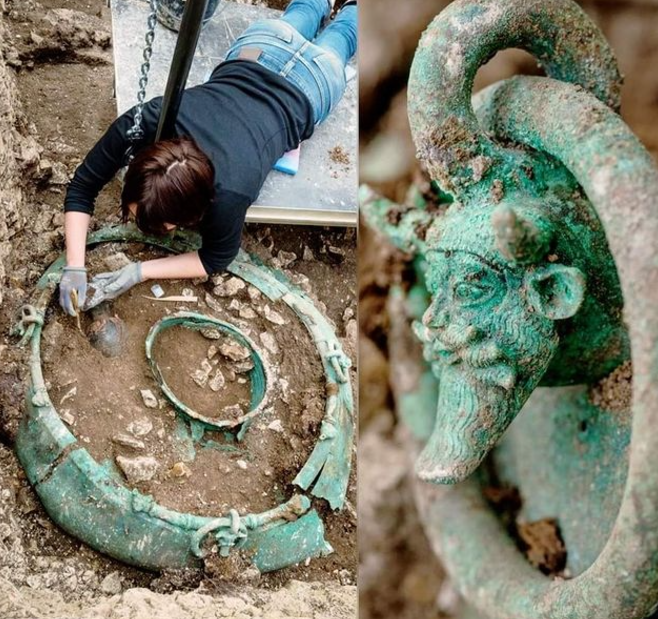
A Prince Without a Name
Despite the grandeur of the burial, the identity of the Celtic prince remains a mystery. No inscriptions or written records were found in the tomb to directly identify him. However, the opulent grave goods strongly suggest he was a figure of immense authority and influence.
The Lavau Burial Site
The tomb, measuring over 130 feet in diameter, contained a burial chamber at its center. This lavish space housed the remains of the Celtic prince alongside an extraordinary array of treasures, each offering insights into the life and status of its occupant.
See more: The Antiochos Grandeur World’s Largest Intact Mosaic
Artifacts Unearthed from the Tomb
The Bronze Cauldron
One of the most stunning artifacts from the tomb is a massive bronze cauldron, measuring over five feet wide. This cauldron, adorned with the head of the Greek river god Achelous, is believed to have been imported from Greece or Etruria.
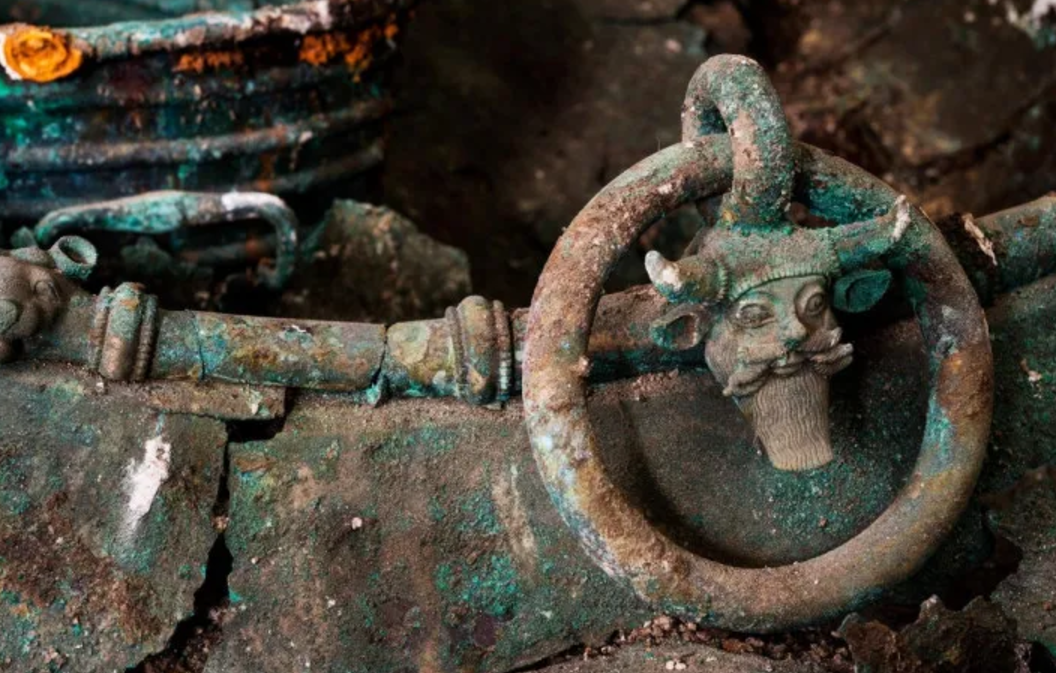
Symbolism: The exaggerated horns and intricate features of Achelous suggest a ceremonial purpose.
Function: The cauldron was likely used in feasts or rituals, particularly for serving wine—a luxury in Celtic culture.
Greek and Etruscan Pottery
Scattered around the burial were Greek and Etruscan vases, underscoring the extensive trade networks of the Celts.
Design and Origin: These finely crafted pieces reveal strong Mediterranean influences, indicating cultural exchange.
Purpose: These items likely played roles in both everyday life and ceremonial practices.
The Golden Torc
The prince was buried with a golden torc, one of the most iconic symbols of Celtic royalty.
Craftsmanship: The torc was intricately designed, showcasing the advanced metalworking skills of the Celts.
Symbolism: It represented power, prestige, and the divine connection of its wearer.
See more: The 2,000-Year-Old Roman Handprint in Cherchell
Cultural Insights from the Lavau Tomb
Sophistication of the Celtic Elite
The artifacts reveal the advanced craftsmanship and aesthetic sensibilities of the Celtic elite during the Iron Age.
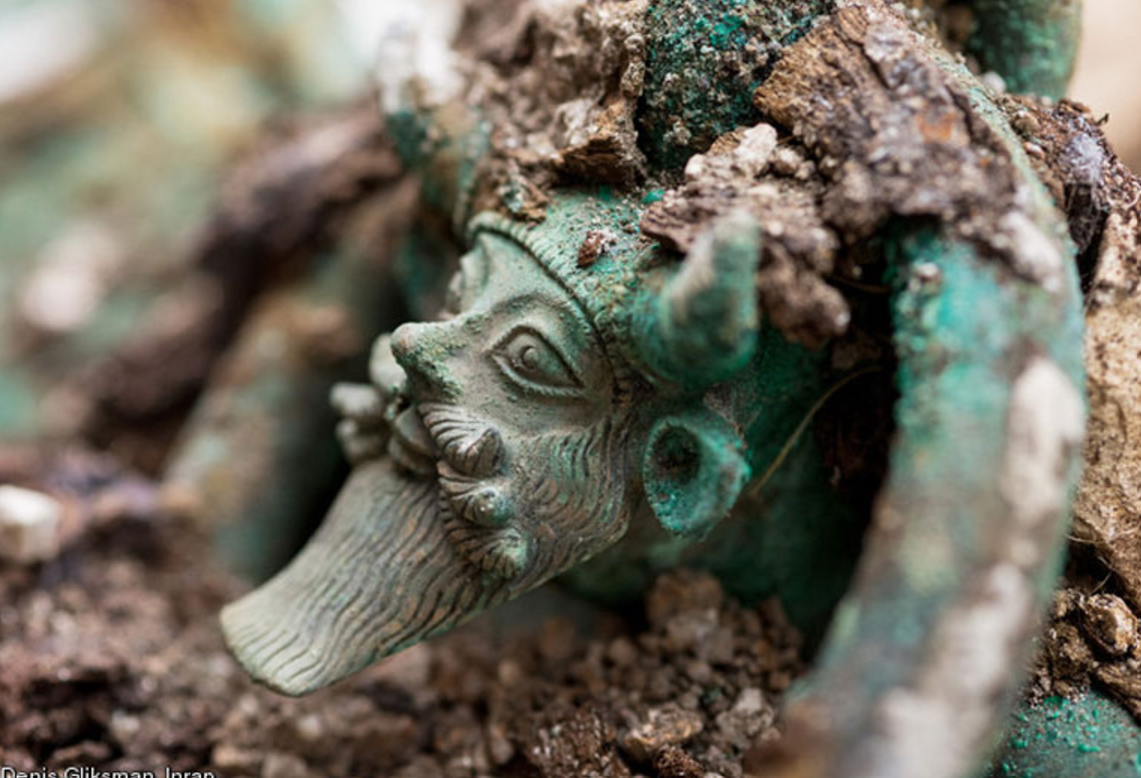
Metalworking Mastery: The intricate designs on the cauldron and torc highlight the Celts’ metallurgical expertise.
Artistic Influences: Mediterranean motifs on some artifacts point to cultural borrowing and adaptation.
Far-Reaching Trade Networks
The tomb’s treasures suggest that the Celts maintained significant trade connections with Mediterranean cultures like Greece and Etruria.
Imported Luxuries: Items such as the bronze cauldron and pottery signify high-value trade.
Economic Power: These exchanges underscore the Celts’ importance in the ancient European economy.
Burial Practices and Rituals
The grandeur of the tomb sheds light on the burial customs of the Celtic elite.
Chariot Burial: The inclusion of a chariot reflects the status of the deceased and the belief in equipping them for the afterlife.
Ceremonial Feasts: The presence of wine-related artifacts suggests a connection to ritualistic feasting.
The Importance of the Lavau Tomb in Celtic History
A Testament to Power and Prestige
The opulence of the tomb is a testament to the power and prestige of the Celtic elite during the 5th century BC. It highlights their dominance in the region and their sophisticated societal structure.
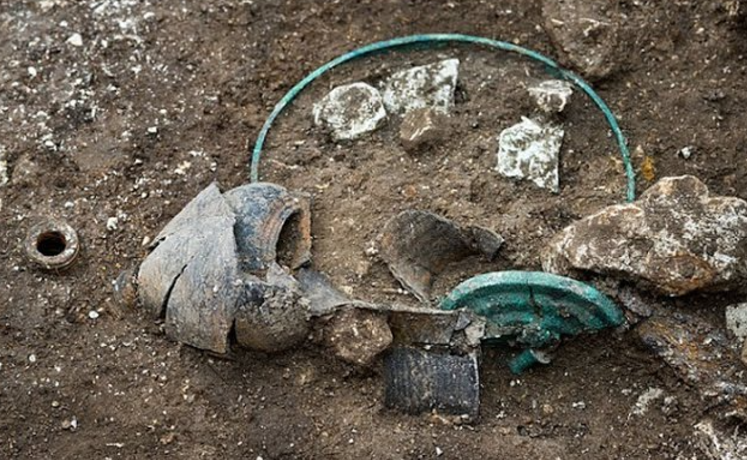
Insight into Celtic and Mediterranean Connections
The imported artifacts demonstrate the cultural and economic ties between the Celtic and Mediterranean civilizations. These connections played a key role in shaping early European history.
Advancing Archaeological Understanding
The discovery has significantly enriched our understanding of Celtic burial practices, trade, and craftsmanship. It underscores the importance of preventive archaeology in uncovering the hidden chapters of human history.
Legacy of the Lavau Celtic Prince’s Tomb
Preservation of Artifacts
The treasures from the tomb are now preserved and studied by archaeologists to uncover further insights into Celtic culture.
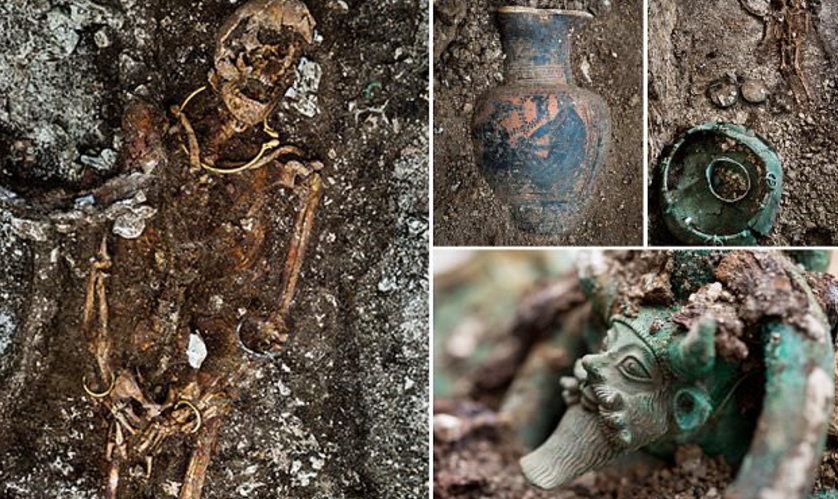
Inspiring New Discoveries
The Lavau tomb has reignited interest in the Celtic world, encouraging more archaeological investigations into the Iron Age.
A Window into the Past
This discovery serves as a window into the lives of the Celtic elite, reminding us of the complexities and richness of ancient civilizations.
Conclusion: A Glimpse into Celtic Grandeur
The Lavau Tomb stands as one of the most significant archaeological discoveries of the modern era. Its extraordinary artifacts offer a rare glimpse into the wealth, power, and connections of the Celtic elite during the 5th century BC.

CÁC TIN KHÁC
Mark Twain & Olivia Langdon: A 36-Year Love Story Filled with Laughter and Devotion
The Tollund Man: A 2,400-Year-Old Mystery Preserved in a Danish Bog
Skara Brae: Scotland’s Hidden Neolithic Village
Porta Nigra: The Hidden Depths of Trier’s Iconic Roman Gate